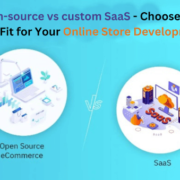Efficient inventory management can make or break a business. Holding too much stock ties up cash, takes up space, and risks items becoming obsolete or expiring. In fact, inventory carrying costs (storage, insurance, etc.) can range from about 20% to 30% of the inventory’s value per year. This means if you have $100,000 in stock, you might spend $20,000–$30,000 annually just to store and maintain it. Such costs directly eat into profit margins. On the other hand, poor inventory management can also lead to stockouts – running out of products when customers want them – resulting in lost sales and frustrated customers. Finding the right balance is crucial. This is why many companies turn to Just-In-Time (JIT) Inventory Management as a strategy to streamline their stock levels, reduce waste, and improve cash flow.
Definition of Just-In-Time (JIT) Inventory Management
Just-In-Time (JIT) inventory management is an approach to inventory control where materials, components, or products are obtained “just in time” to use or sell. In simple terms, a business using JIT doesn’t stockpile large quantities of inventory in advance; instead, it orders or produces goods only as they are needed to meet actual customer demand. Traditional systems might purchase or manufacture excess stock based on forecasts (a “push” system), but JIT is a “pull” system driven by real-time demand. The goal is to increase efficiency and decrease waste by receiving goods only when required for production or sales. Because items arrive or are made right when they’re needed (and not far ahead of time), companies can minimize storage costs and avoid having money tied up in unused inventory.
However, this approach relies on precise coordination – businesses must accurately forecast demand and have reliable suppliers, since there is little room for error or delay in a JIT system.
How JIT Works: Simple Explanation and Examples
In a Just-In-Time system, materials flow into each stage of the business exactly when they are needed, not before. Think of it like a well-timed dance between a company and its suppliers: each component arrives right on cue. For example, in a JIT manufacturing scenario, an automobile factory will have parts delivered only when there is a customer order to fulfill. Toyota famously operates this way, it orders car parts only after a new car order is received, so those parts show up on the assembly line just as they’re ready to be used. The factory doesn’t stockpile a huge surplus of engines, tires, or seats; it relies on suppliers to deliver those exactly when assembly is about to need them. This minimizes the inventory sitting idle.
JIT isn’t only for big manufacturers. Other businesses use JIT principles too. A restaurant, for instance, might schedule daily deliveries of fresh ingredients rather than storing a week’s supply – produce and meats arrive each morning just in time for that day’s meals, ensuring freshness and cutting refrigeration storage needs. In retail, some stores use JIT by restocking products only as customers buy them (consider how online retailers or drop-shipping models operate, ordering from their supplier only after you place an order). In fact, industries from retail and restaurants to publishing and tech have benefited from JIT practices. The common thread in these examples is that items are replenished or made in direct response to actual demand, keeping inventory levels to a minimum at all times.
Key Principles and Characteristics of JIT
JIT inventory management is built on several core principles and practices that make the system work effectively:
- Demand-Driven “Pull” System: Production or restocking is triggered by actual customer demand, not forecasts alone. Rather than pushing large batches of products to market hoping they’ll sell, a JIT pull system waits until an order is placed or a clear demand signal is received. This ensures you only stock what you know is needed, avoiding overproduction.
- Minimal Inventory Levels: A hallmark of JIT is keeping inventory as low as possible at every stage – ideally near zero excess. The idea is to have just the right amount of raw materials and finished goods on hand. Any inventory that isn’t immediately needed is seen as waste. This means smaller lot sizes and more frequent reordering or production runs, instead of buying or making in bulk and storing the surplus.
- Frequent Replenishment & Close Supplier Coordination: Because you maintain lean stock, you likely need more frequent deliveries of materials or products. JIT relies on strong relationships with suppliers who can deliver goods reliably at short notice. Communication must be tight. Often, JIT systems use tools like Kanban cards (a scheduling technique developed by Toyota) to signal when the next batch of parts or products should be delivered, ensuring smooth workflow. Suppliers in a JIT partnership might make smaller, more frequent shipments rather than one large delivery, arriving just in time to be used.
- Focus on Quality and Consistency: With minimal buffers, there is little room for defects or delays. A JIT operation requires steady production processes and high-quality outputs – if a machine breaks down or a batch of parts is faulty, there aren’t extra inventory reserves to fall back on. Thus, preventative maintenance, quality control, and error-free work are critical. Every part and product must meet standards so that production isn’t interrupted by quality issues.
- Waste Reduction and Continuous Improvement: JIT is fundamentally about eliminating waste – not just physical waste, but any activity that doesn’t add value. Excess inventory is seen as one form of waste, but so is wasted time and effort. Companies practicing JIT often embrace continuous improvement (the Japanese concept of Kaizen) to streamline operations. They constantly look for ways to reduce waiting times, shorten setup or changeover times between production runs, and optimize workflows. The end result is a leaner operation that can adapt quickly.
- Accurate Forecasting and Scheduling: Although JIT responds to actual demand, businesses still need to plan very carefully. Accurate demand forecasting and efficient scheduling are essential to avoid hiccups. If you underestimate demand, you risk running out; if you overestimate, you might produce too early. To make JIT work, companies use data (sales trends, seasonality, etc.) to predict needs and time their orders. In fact, precise demand forecasting is considered the most critical internal factor for JIT success, and on-time supplier deliveries are the most critical external factor. In short, planning and communication drive JIT effectiveness.
Advantages of JIT Inventory Management
- Lower Inventory Costs
Reduced storage needs mean lower carrying costs and more cash flow for other operations. - Reduced Waste and Obsolescence
By only ordering what’s needed, businesses avoid overproduction and expired or unsold stock. - Improved Efficiency
Streamlined operations and faster production turnaround improve overall productivity. - Space Savings
Less storage means more room for revenue-generating activities. - Greater Agility
Businesses can adapt faster to market changes, trends, or customer preferences.
Conclusion: Is JIT Inventory Management Right for You?
Just-In-Time (JIT) Inventory Management has proven to be a powerful strategy for many companies, from small startups to large corporations. It’s popular with businesses of all sizes because it enhances cash flow and reduces the capital tied up in running the business. By trimming the fat out of inventory, JIT can improve efficiency and profitability. If your business is struggling with high inventory costs or slow-moving stock, JIT is certainly worth considering. It especially shines in environments where demand is relatively steady or can be forecasted with reasonable accuracy, and where suppliers can be depended on to deliver goods on schedule.
However, JIT is not a one-size-fits-all solution. Before embracing JIT, consider your operational realities. If you operate in a market with highly unpredictable demand spikes, or if your supply chain is global and prone to delays, a pure JIT system might expose you to stockouts or production stoppages. Some businesses choose a hybrid approach – mostly JIT but with small safety stocks of critical items, sometimes called a “just-in-case” buffer, to cushion against shocks. The key is to tailor the approach to your risk tolerance and industry conditions.
In the end, Just-In-Time Inventory Management is about efficiency and responsiveness. It asks: why tie up money and space in inventory that isn’t being used right now? For many businesses, that question leads to a transformation in how they operate. If you have the right conditions – solid demand planning and reliable supply partners – JIT can be a game-changer that boosts your competitiveness. But it requires discipline and trust across your supply chain. As a business owner or beginner in this area, start small, educate yourself and your team, and build up the necessary infrastructure. When implemented thoughtfully, JIT inventory management can help your business run leaner, respond faster to customer needs, and ultimately, improve your bottom line. It’s a strategy of doing more with less, and in today’s fast-paced market, that can be a significant advantage as long as you manage the risks.







Comments